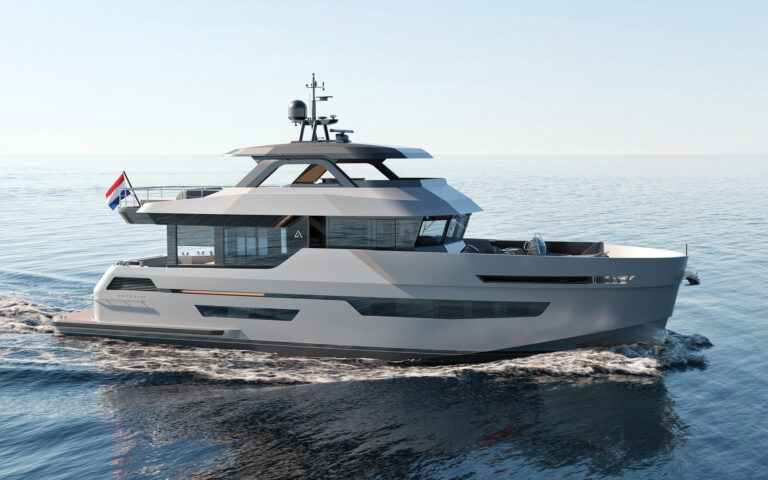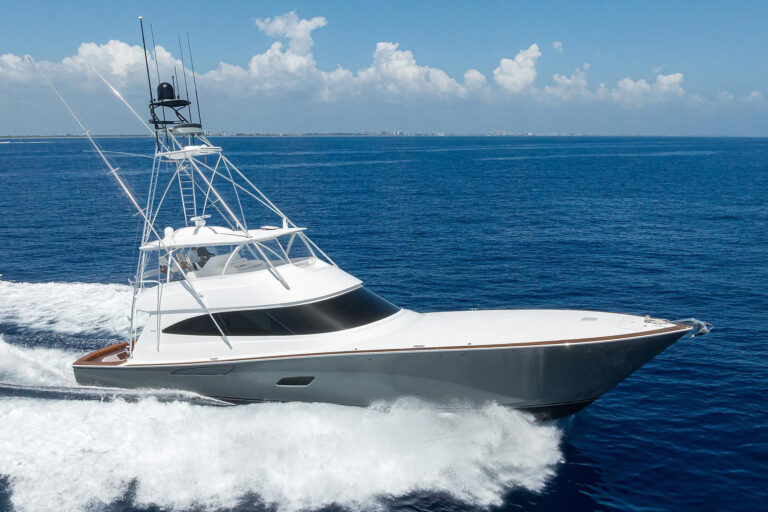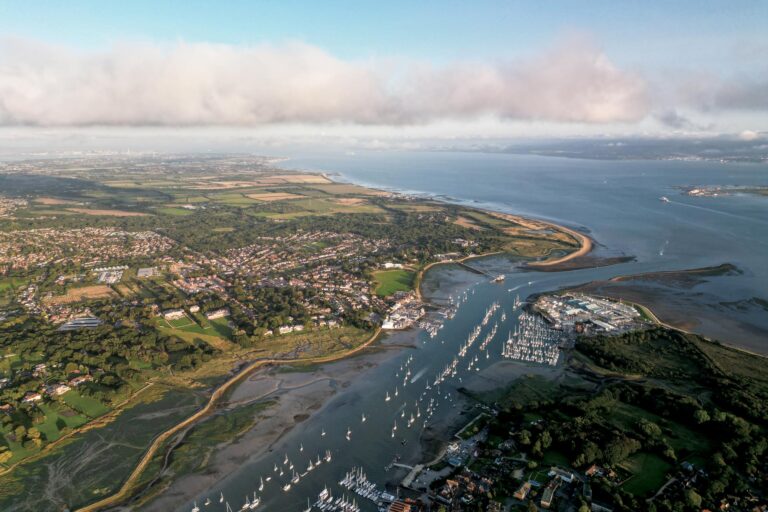
Few mousetraps better lend themselves to innovation than boats, and countless brilliant minds have devoted rich careers to making boating better, safer and more enjoyable. Each year, Yachting hails some of the most beyond-the-box thinkers with its annual celebration of innovation. Meet the Class of 2023.
Donald L. Blount
As a boy in Roanoke, Virginia, Donald Blount dreamed of designing steam locomotives. He enrolled in Virginia Tech’s engineering department in 1954, but while he was there, Norfolk and Western Railway switched to diesel engines. Blount instead landed an internship at David Taylor Model Basin, one of the world’s largest ship-design test facilities, with ties to the U.S. military. Rather than returning to college, he accepted a full-time, non- degree technical position there in 1956.
By 1959, Blount had tested into a job as a naval architect. By 1963, he had completed his mechanical-engineering degree at The George Washington University. He spent the next 27 years researching and directing programs centering around emerging hydrodynamic technologies for the U.S. Navy.
In 1988, he founded Donald L. Blount and Associates, which provided naval-architecture and marine-engineering consulting services relating to specialized, high-speed motorized vessels. Some of the best-known yachts he was involved with include the 222-foot Fincantieri Destriero, which plied the Atlantic at a pace of 53.09 knots in 1991, and the 136-foot Izar Fortuna, which clocked 68 knots during sea trials.
Gibbs & Cox acquired DLBA in 2015, the same year Blount was recognized with a medal from the Society of Naval Architects and Marine Engineers. He died last July at age 87.
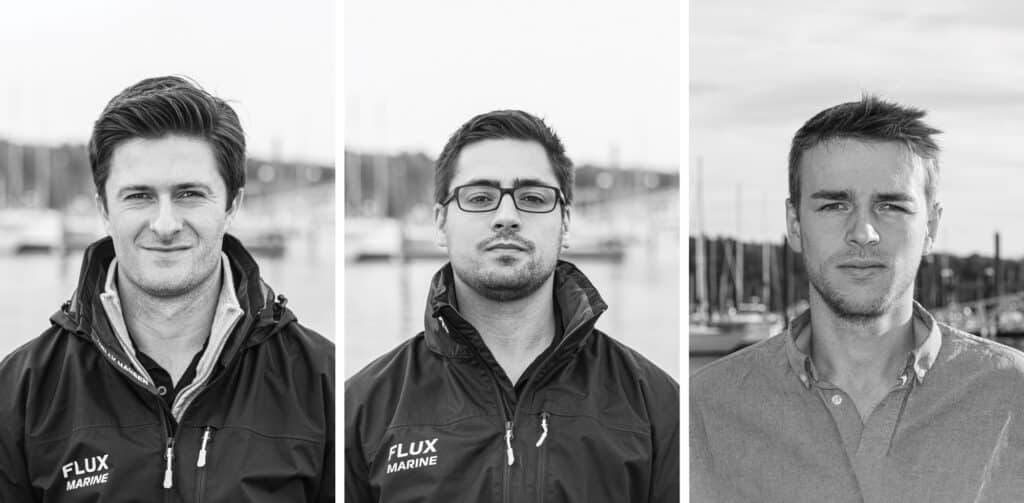
Evoy and Flux Marine
Electric propulsion is making inroads, and two companies on opposite shores of the Atlantic have been developing this power solution for outboards.
Evoy is based in Florø, Norway. The father-and-son team of Gunnar and Leif Stavøstrand started the company in 2018. Evoy’s Polarcirkel 860 demo boat launched in summer 2019. By that fall, its 400 hp inboard electric motor raised international eyebrows by hitting 55 knots. Evoy’s first products reached consumers in 2020, and the company now produces inboard and outboard motors. It also produces high-performance, liquid-cooled batteries that are available in 63, 126 or 189 kWh packs. The latter two are available in 120-plus, 200-plus, 300-plus and 400-plus hp packages that can power vessels ranging from 15-foot skiffs to performance-minded 50-footers.
Flux Marine, based in Bristol, Rhode Island, was founded by Ben Sorkin, Daylin Frantin and Jon Lord. The idea to build electric outboards came from an engineering project that Sorkin started at Princeton University (Class of 2017). The three earned grants, including from The National Science Foundation, and investors that allowed them to turn concept into consumer product.
The company currently offers three outboard motors, available in 15, 40 and 70 hp models. Alternatively, customers can purchase boat packages that sport up to 100 hp and deliver up to 75 nautical miles of range.
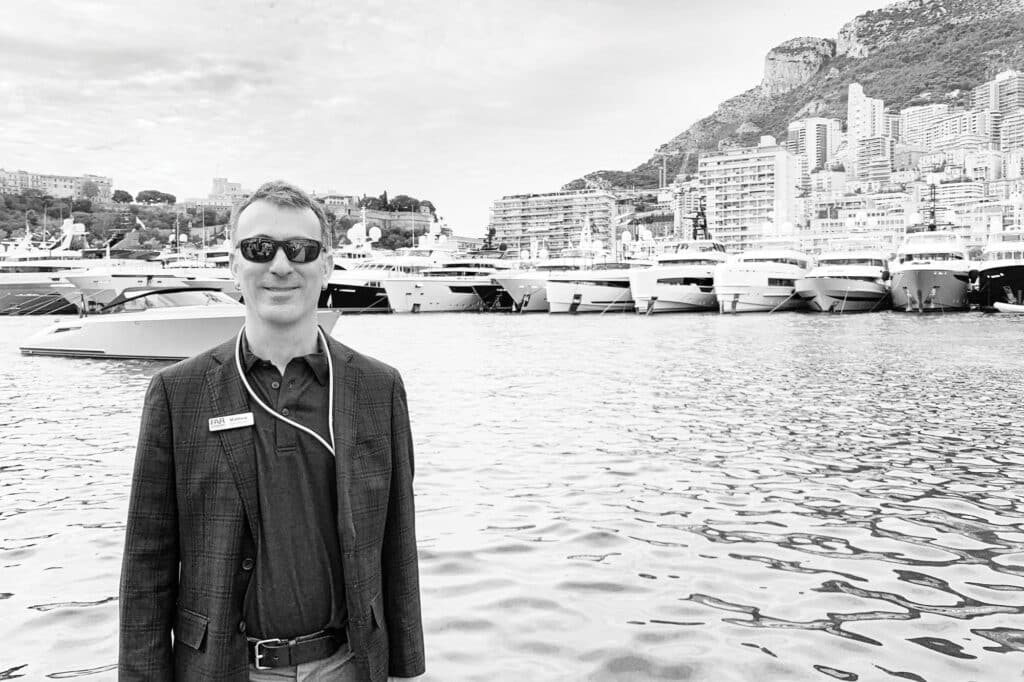
FarSounder
While mariners have long enjoyed the ability to scan horizons with radar and probe the depths with sonar, the civilian marine world had a serious blind spot in front of the bow. This started changing in 2001, when University of Rhode Island professor James Miller and Matthew Zimmerman, then a student of ocean engineering, started exploring ways of using sonar to prevent accidents. The two proved their concept with a model of a forward-looking sonar in 2002, and then spent two years refining and developing it before offering FarSounder’s first commercial product in 2004.
The FS-3 had a maximum range of about 1,000 feet, a 90-degree field of view and a two-second refresh rate. Today, FarSounder offers three products—the Argos 350, Argos 500 and Argos 1000—with ranges of around 1,150 feet to 3,280 feet, fields of view of 60 to 120 degrees, and refresh rates of roughly one to three times per second.
These products allow mariners to thread carefully past Caribbean coral heads, negotiate poorly charted anchorages, tiptoe past high-latitude ice and more. FarSounder’s forward-looking-sonar systems have become go-to equipment for many expedition-grade yachts.
Today, FarSounder is also working on software that lets customers create their own 3D cartography.
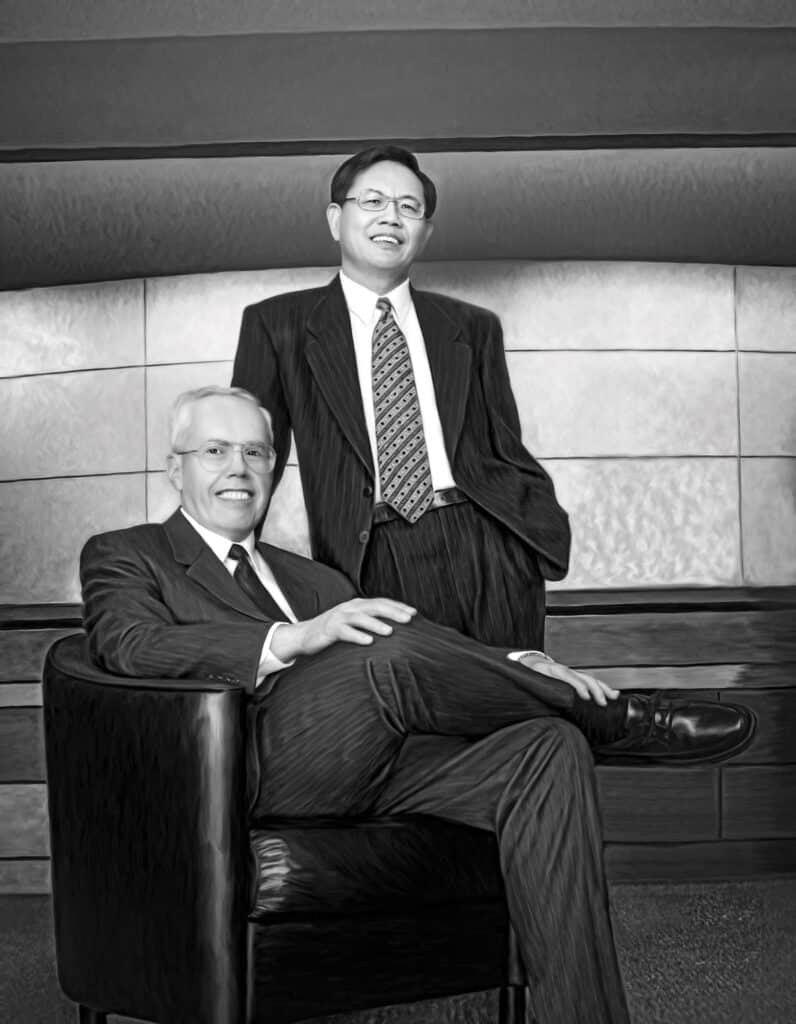
Gary Burrell and Min Kao
Theirs is a classic story of foresight. In the early 1980s, Gary Burrell, an electrical engineer, was working at King Radio Corp. in Olathe, Kansas. He headhunted Min Kao, a younger electrical engineer who had been working for a defense contractor. The U.S. government was then building what would become the Global Positioning System, and after 1983’s Korean Air Lines Flight 007 disaster, President Reagan signed legislation making GPS publicly available.
Burrell and Kao saw the potential of civilian GPS and founded ProNav in 1989. They rebranded to Garmin in 1991. Their timing was impeccable: The GPS100 hit chandlery shelves in 1990. Four years later, Garmin delivered the first combined chart plotter and sonar, and the first color GPS chart plotter.
As the market shifted, so did the company. In the late 1990s, Garmin began making a GPS-based navigation system for cars, culminating in the Nüvi systems of the mid-2000s. In 2013, the company introduced GPS-based smartwatches.
And the company continued investing heavily in marine electronics.Garmin’s current product portfolio includes onboard audio, multibeam sonars, 24-inch touchscreen multifunction displays, radars with Doppler technology, and more.
Scout Boats
Boatbuilder Steve Potts joined the marine industry when he was 14 years old, starting on the ladder’s lowliest rung. He scaled his way to plant manager at American Sail before starting his own company in 1988. His first creation was a 14-footer based on a classic 1960s boat called the Scout that he had worked on.
Potts’ first keel-up design was a simple, capable fishing boat with a high level of finish. Potts began gaining traction with dealers in the Carolinas, but then Hurricane Hugo demolished his manufacturing operations in 1989, forcing him to rebuild from the ground up.
It paid off: Scout has become an innovator in top-quality center consoles and has obtained several patents. Scout’s innovations include a reverse-shoebox hull/deck design, which purportedly prevents water ingress at the hull/deck joint; and the Air Assist, NuV3 and Scout Stepped Hull Technology hull forms. Patents include the company’s T-Top/Glass Enclosure, which increases helm visibility; there’s also a patent-pending Electronically Actuated Articulating Rocket Launcher, which raises or lowers the boat’s hardtop-mounted rocket launchers; and the anchor camera.
Scout currently builds center consoles from 17 to 53 feet length overall.
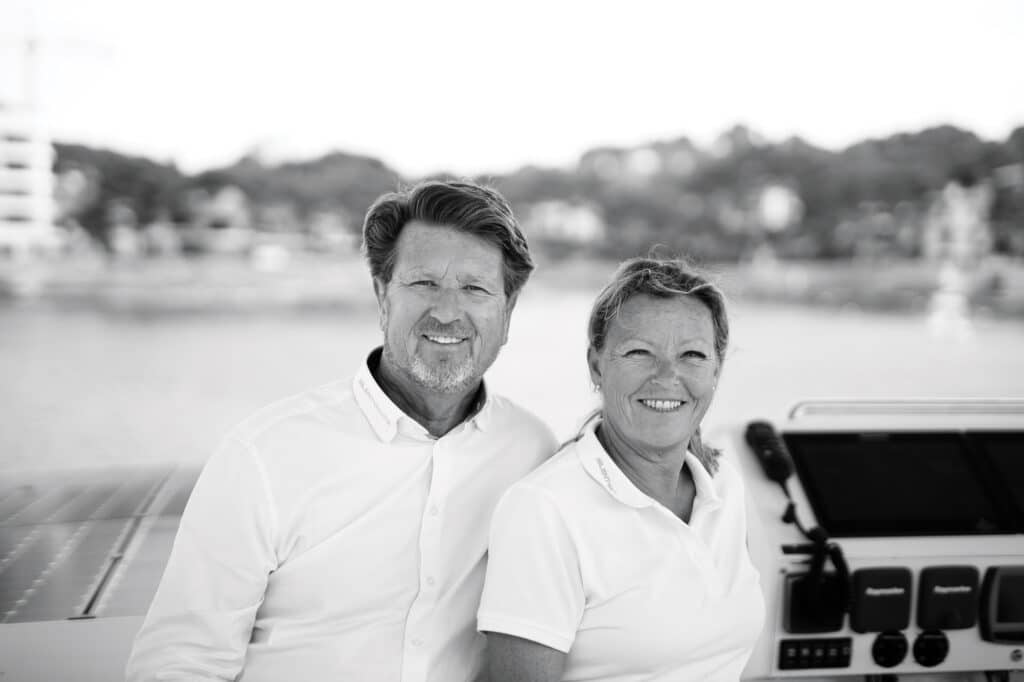
Silent-Yachts
Heike and Michael Köhler know life offshore. That happens when you amass 75,000-plus nautical miles over some 6,000 days of cruising. One major conclusion they derived was that boaters needed a better, cleaner way of locomoting and generating DC power than by burning fossil fuels.
The couple spent 2004 to 2009 experimenting with and evaluating a range of alternative power sources that would generate self-renewable propulsion and onboard electricity. In 2009, the duo built the Solarwave 46, which was the world’s first electric-powered bluewater catamaran that could produce sustainable juice via solar panels. A vigorous shakedown was required, so the Köhlers spent the next five years cruising and proving the concept.
Once convinced, they founded Silent-Yachts. The company launched the Silent 64 in 2016. In 2018, that boat crossed the Atlantic in 16 days at a steady and emissions-free rate of 6 knots.
Today, Silent-Yachts offers all-electric yachts from 60 to 120 feet length overall, an 82-foot hybrid catamaran and a 13-foot electric tender. Additionally, the company collaborated with Ed-TEC to create the Silent Speed 28, which reportedly delivers 60-plus-knot speeds with innovative features such as foils controlled by artificial intelligence.
Silent-Yachts is also working to create Silent-Resorts, a Bahamas destination that will cater to electric vessels.
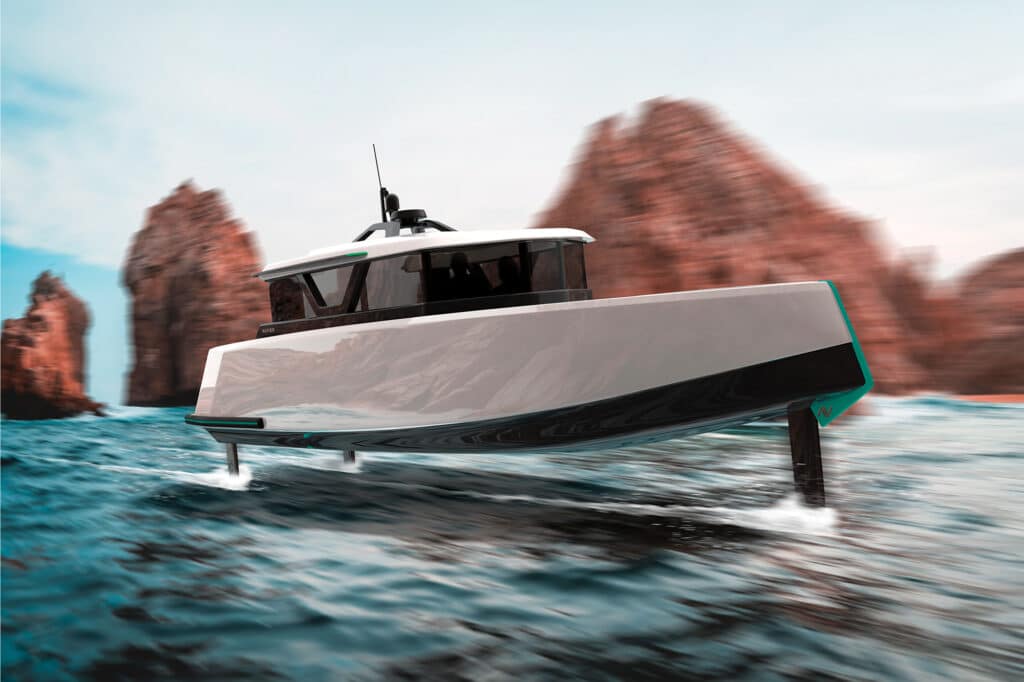
Future Potential
Sampriti Bhattacharyya, Reo Baird and America’s Cup-winning naval architect Paul Bieker are advancing the concept of vessel hydrofoils with the Navier 27. This all-electric foiling powerboat has a reported range of up to 75 nautical miles at 20 knots, with autonomous navigation capabilities. The Navier team is helping to change hydrofoils from being thought of as oddball America’s Cup stuff into being nearly mainstream technology that should increase efficiency.






